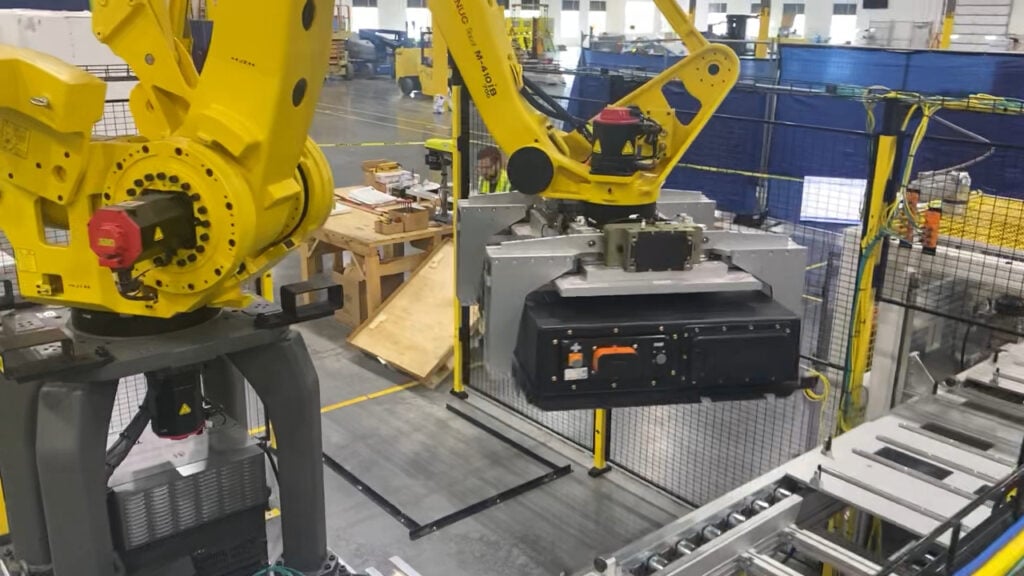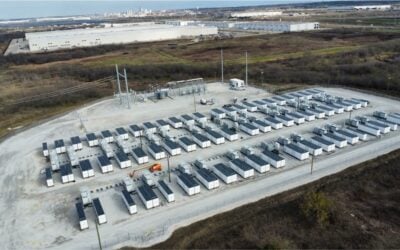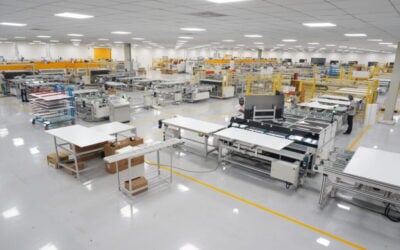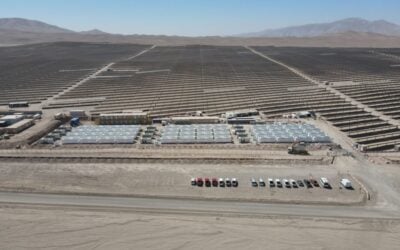
Fluence expects to hit the lower end of its previously issued revenue guidance for the 2025 financial year due to delays in ramping up at US production sites.
Yesterday, the global energy storage technology and energy software services provider reported financial results for the third quarter of its financial year, ending 30 June 2025. It reported quarterly revenue of US$602.5 million, up 24.7% year-on-year from US$483 million, and adjusted EBITDA was US$27.4 million in Q3 2025 versus US$15.6 million for Q3 2024.
In the three months, the company signed US$508.8 million of new customer orders, bringing the total order backlog to around US$4.9 billion.
With the biggest share of projects in its development pipeline in the Americas, and much of that in the US, company leadership said that projects that had been put on hold last quarter due to policy uncertainty were starting to move again.
Try Premium for just $1
- Full premium access for the first month at only $1
- Converts to an annual rate after 30 days unless cancelled
- Cancel anytime during the trial period
Premium Benefits
- Expert industry analysis and interviews
- Digital access to PV Tech Power journal
- Exclusive event discounts
Or get the full Premium subscription right away
Or continue reading this article for free
“We had to halt the execution of a few contracts we had signed. All those contracts are now moving forward and are moving forward to execution,” Fluence CEO Julian Nebreda said in an earnings call to explain the results.
Fluence has been profitable on a GAAP gross margin basis for every quarter since Q1 2023, although there was a slight quarter-on-quarter decline from 13.1% in Q2 to 12.7% in Q3 2025.
However, while the company reaffirmed its prior FY2025 revenue guidance of US$2.6 billion to US$2.8 billion, it now expects to hit somewhere near the bottom of the range.
‘Always believed US would be a domestic content market’
Fluence was forced to lower its guidance previously in Q1, when expectations were lowered to the tune of US$600 million due to customer contracting delays for three projects in Australia.
It offered its current guidance in Q2, when it also revised down adjusted EBITDA guidance from a range of US$70 million to US$100 million to US$0 to US$20 million, where it still stays.
In its most recent results, the company said delays associated with ramping up its domestic manufacturing capabilities would defer the ability to generate about US$100 million in revenue into the early part of next year.
Nonetheless, the company sees domestic manufacturing in the US, through its own facilities and from contractors like battery cell supplier AESC, as a strategic advantage for the longer term.
The US market accounts for around half of Fluence’s business, and in addition to sourcing cells from AESC’s factory in Tennessee, the company has built a module factory in Utah, a component factory in Texas and a BESS enclosure assembly plant in Arizona.
Fluence experienced “some typical ramp-up issues” putting in place the Arizona production lines, Nebreda said in an earnings call to explain results.
“In the case of the Arizona facility, we essentially did a technology transfer from what we were doing in Vietnam to the US,” Nebreda said.
“Some of the work processes and some other things needed to change, to adapt to the US, which delayed the startup and the ramp-up. We believe we have it all under control.”
Nebreda claimed “nobody believed” BESS enclosures could be cost-effectively made using US steel, but the Arizona factory will produce enclosures made with 100% US steel.
With the US introducing new eligibility rules for tax credit incentives around Foreign Entity of Concern (FEOC) companies, which limit the ability to source materials or equipment from China, coupled with existing bonuses for the use of domestic content, Fluence is positioning itself to meet domestic content requirements.
“Our view has always been that the US battery storage market was going to be a domestic content market,” Nebreda said, noting that Fluence’s domestic content strategy began even before the Inflation Reduction Act (IRA).
“How this technology is built was going to be difficult to see the US allow this [market] to become dominated by Chinese suppliers.”
Nebreda said the ‘One, Big Beautiful Bill Act’ confirmed that view.
“We don’t see it as a threat. It has always been the base of our assumption planning,” he said.
In the 2024 rankings of global BESS system integrators by shipments released a few days ago by market research firm Wood Mackenzie, Fluence lost its position in the top five, having placed second for 2022 and third in 2023.





![burns and mcdonnell GA_Battery_Storage_003[84] The maturing industry has allowed EPCs to "get more creative with engineering technology and construction equipment to help streamline operations in the field," Julian Hoover says. Image: Burns & McDonnell](https://www.energy-storage.news/wp-content/uploads/elementor/thumbs/burns-and-mcdonnell-GA_Battery_Storage_00384-rgklnp65oz5okwj4j525f5bdz9y57j338jh6zpqdvo.jpg)